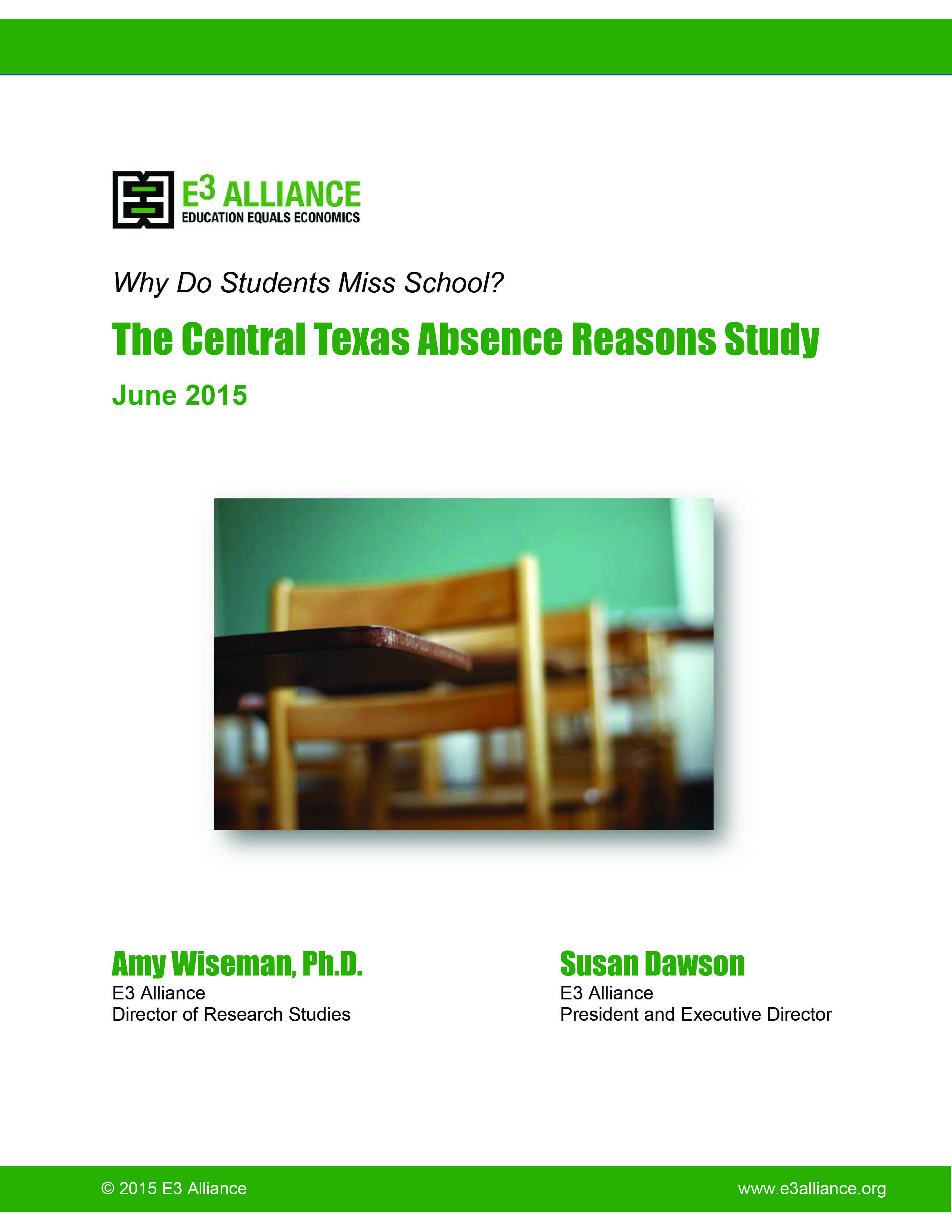In this study, E3 Alliance focused efforts on student attendance, an issue that has a “triple bottom line” impact on students, teachers, and school resources. In 2013, E3 conducted a study to collect detailed information about why students in Central Texas miss school. Our findings suggest that coordinated regionwide efforts to prevent acute illness can improve attendance for all students, while targeted interventions can help specific sub-populations of students to reduce absenteeism and experience greater academic success.
Key Findings:
- 72% of absences are “true absences,” defined here as cases in which students are not in class, at another district campus, or participating in a school event.
- Acute illnesses such as colds or flu account for 48% of all true absences in the region. The next most common reasons were skipping, chronic illness and family emergencies.
- Absence frequency patterns were similar across two non-contiguous districts, and a spike in acute illness absences seen in both districts aligned with a spike in flu in the region.
- Although half of Central Texas students are low-income, they account for more than half of mental health, and non-medical absences such as family responsibilities, skipping, and logistical problems getting to school.
- Students at risk of dropping out are significantly more likely than their peers to miss school due to family responsibilities, logistical problems getting to school including transportation, skipping, out of school suspensions, and for legal reasons.
- Males and students who were ever English Language Learners are more likely than their peers to miss school due to skipping, out of school suspensions, and for legal reasons.
- Students in the 9th and 12th grades are more likely than students in other grades to skip class.
To learn more, please read the full report here: E3 Alliance Absence Reasons Study.







